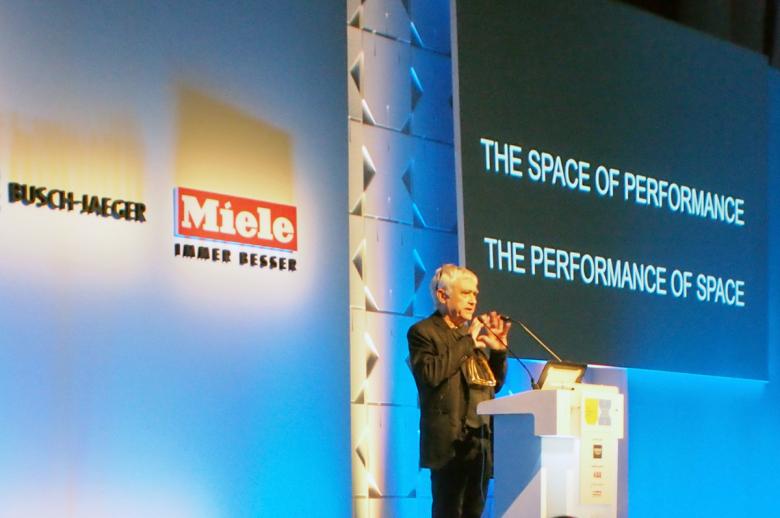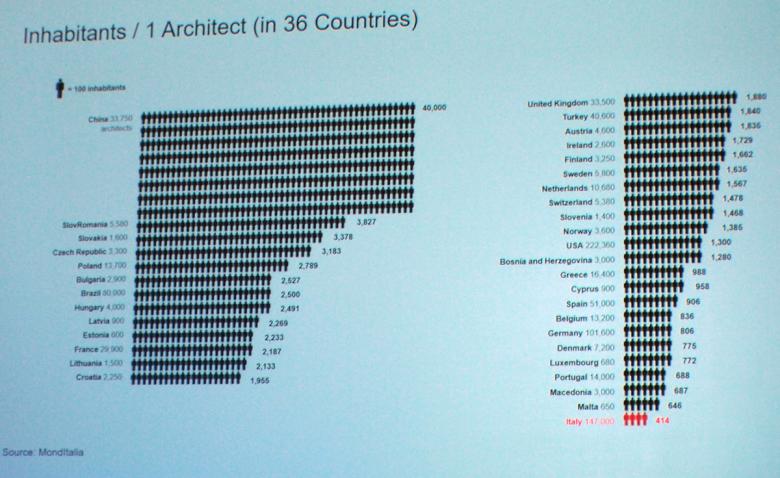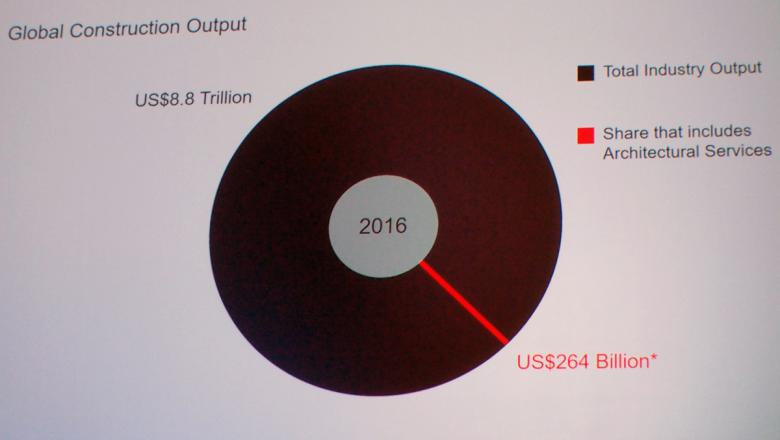Architect Rafael Viñoly kicked off the 2017 World Architecture Festival with a meandering and sobering keynote talk about the crises architects find themselves in and a way to move forward.
Back in September, when the list of speakers for WAF was announced, the principal of Rafael Viñoly Architects was slated to talk about "how the concept of performance – creating flexible and integrated architecture that fosters and encourages a wide-range of interactions – is applied in the practice’s projects across a variety of building types." But this fairly typical type of presentation was ditched last night, before Viñoly even arrived in Berlin, in favor of one with more contemporary relevance and a markedly somber tone.
Viñoly's initial topic was geared suitably to "performance," the theme for this year's WAF. With the lecture reworked at the last minute he could only try to equate this "loaded term," as he called it, with the new topic. Performance can refer to science, finance, and design outside of architecture, but within architecture it often refers to theaters, concert halls, and other spaces for various types of performances, be it a play or a piano recital. (In terms of the latter, Viñoly briefly recounted that when he was young he was good at piano and wanted to become a pianist, but after he heard a really good pianist he changed his mind.)
The term also refers to how a building performs, and with this meaning of the word critical judgments come into play, judgments that assert how well a building meets certain criteria. And here is where Viñoly made his point about the crises we face: architects don't design, teach, or criticize well. In order to fix where the discipline is today – in decline, in crisis, within an imbalance between supply and demand – education is most important in Viñoly's mind. What form that sort of education would take is not completely clear, though it would certainly go against what he called "experimentation without knowledge" prevalent in the last few decades and confront the cultural changes brought on by information technology.
Although Viñoly moved from a lecture saturated with images of his buildings to one devoid of images – a rarity for any architect – he ended with "two very depressing images," shown above and below. The first revealed the number or registered architects relative to the population, from one architect for every 44,000 people in China all the way down to one architect for every 414 people in Italy. China is an exceptional case, with most of the countries listed having one architect for every 1,000 to 3,000 people.
But Viñoly honed in on the second image, which clearly, though not surprisingly, illustrates that the work produced by architects makes up only a tiny sliver – about 3% – of the huge amount of money spent on shaping the built environment every year, in this case 2016. Viñoly asserted that something needs to be done so that percentage doesn't get reduced even further, such as might happen through automation. That might seem far-fetched now (how could a computer do an architect's job?), but once self-driving cars only existed in the realm of science fiction. Time for educators to step up, apparently, to produce some new-fangled architects that will save the profession – and the world.


